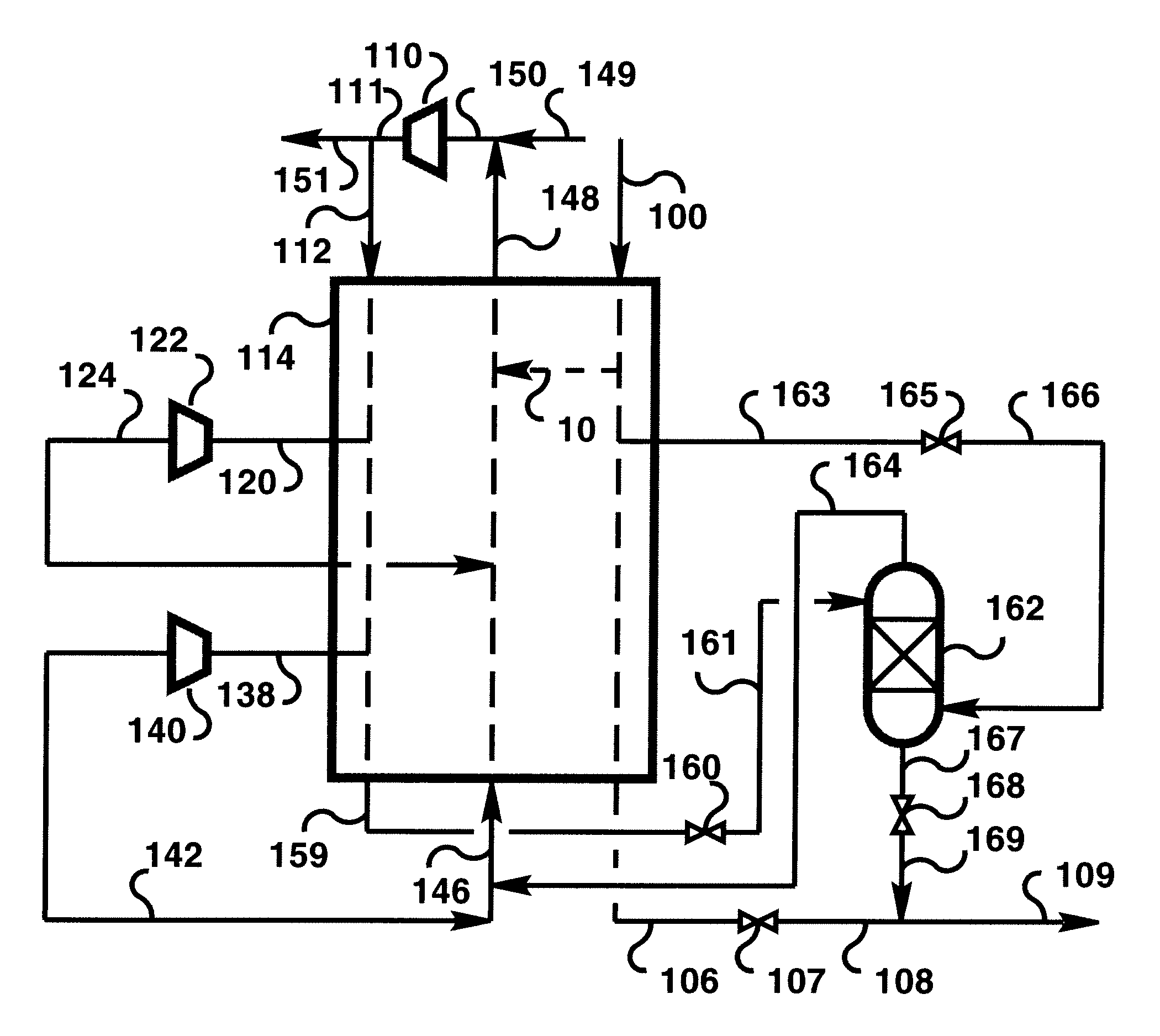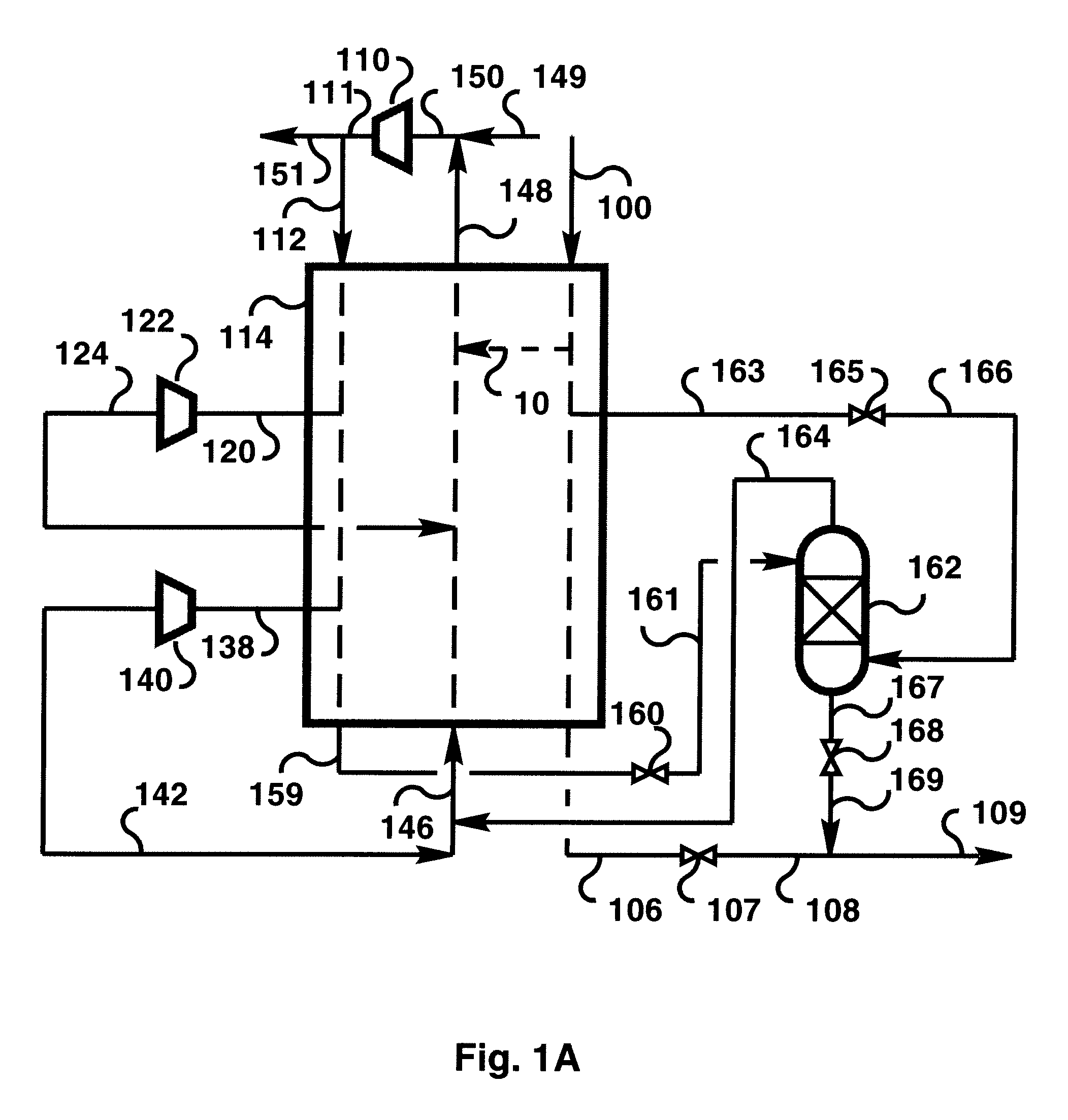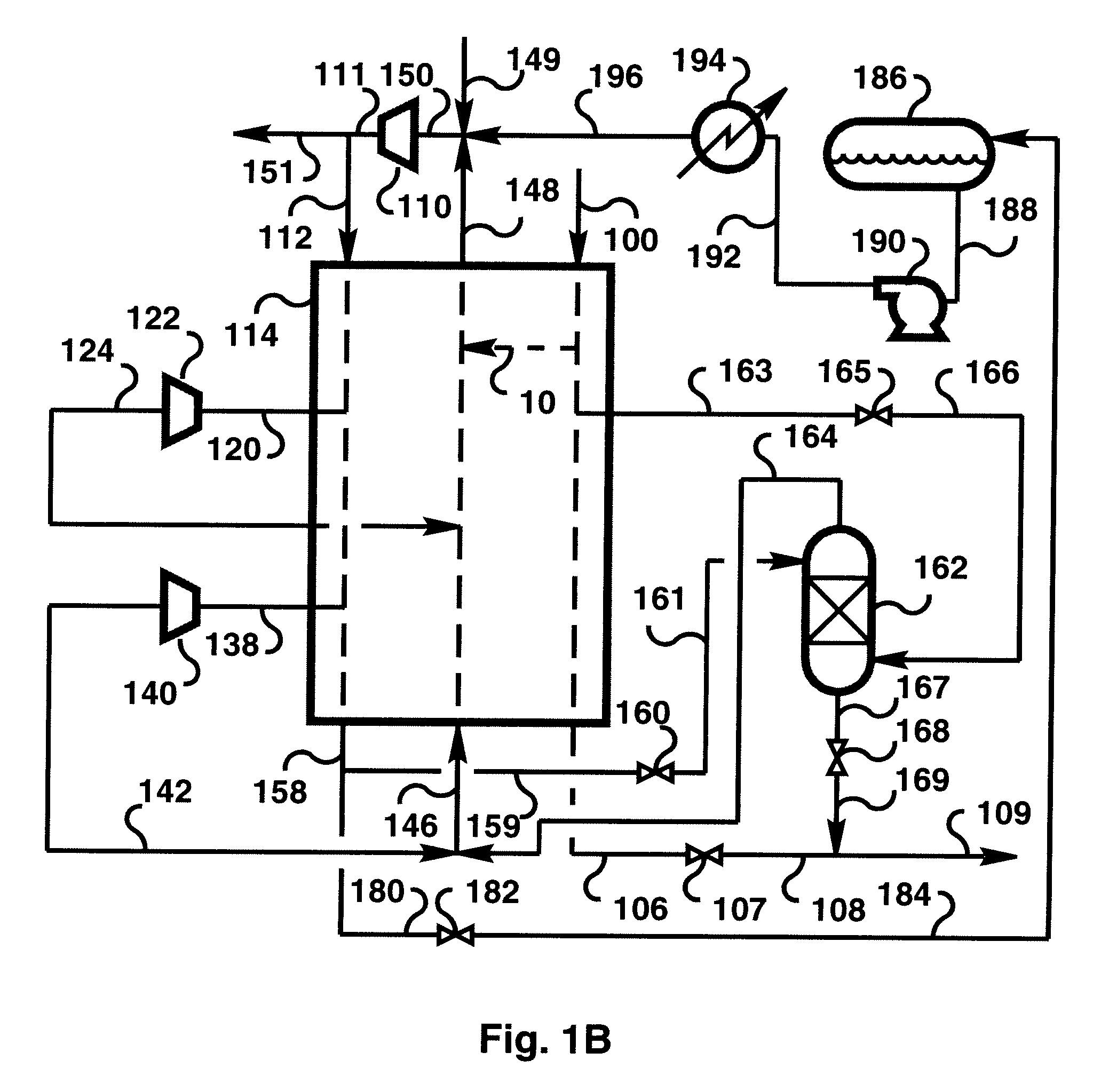Refrigerant Composition Control
a technology of refrigerant composition and control, which is applied in the direction of refrigeration and liquidation, lighting and heating apparatus, solidification, etc., can solve the problems of small leakage, and lowering the efficiency of the cycle, so as to achieve the effect of reducing the efficiency of the system
- Summary
- Abstract
- Description
- Claims
- Application Information
AI Technical Summary
Benefits of technology
Problems solved by technology
Method used
Image
Examples
example
[0082]A plant produces 1.5 million tons per annum of LNG. The plant uses a 2-expander reverse-Brayton cycle. The plant uses gaseous nitrogen as refrigerant. The natural gas leak rate into the refrigerant circuit is 90 kg / hr. The natural gas contains 4% N2, 91% methane, and 5% ethane.
[0083]A hydrocarbon removal column with a reboiler was added to the liquefier as illustrated in FIG. 2. The hydrocarbon removal column includes five (5) theoretical stages plus the reboiler. The packed bed height of about four (4) feet was used for all cases. The reboiler duty is about 290 KW. Table 1 shows the relative power consumption of the plant as compared to a base case (no leak, pure nitrogen refrigerant) and approximate hydrocarbon removal column diameter using Sulzer 500Y packing as a function of methane concentration maintained in the refrigerant circuit.
TABLE 1Diameter ofMethane Maintained in NitrogenPowerContaminant RemovalRefrigerant StreamRequiredColumn(%)(% BC)(ft)2.5101.82.85.0101.02.08....
PUM
 Login to View More
Login to View More Abstract
Description
Claims
Application Information
 Login to View More
Login to View More - R&D
- Intellectual Property
- Life Sciences
- Materials
- Tech Scout
- Unparalleled Data Quality
- Higher Quality Content
- 60% Fewer Hallucinations
Browse by: Latest US Patents, China's latest patents, Technical Efficacy Thesaurus, Application Domain, Technology Topic, Popular Technical Reports.
© 2025 PatSnap. All rights reserved.Legal|Privacy policy|Modern Slavery Act Transparency Statement|Sitemap|About US| Contact US: help@patsnap.com



